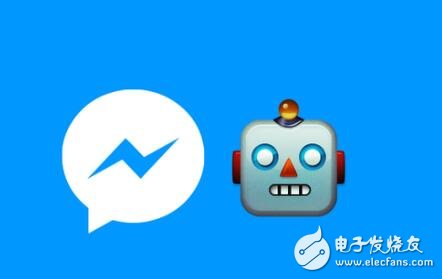Previously, many people just heard of the concept of "robot" in search engines. Search bots like Googlebot can crawl web pages and catalogue web content in an orderly manner. In 2016, there was a new category of robots—that is, conversations with humans, completion of takeaways, travel bookings, or chat services. Social robot.
What is the expected VS reality 2017 chat robot going to?
In April last year, Facebook announced that it would create chat bots on its Messenger platform. Many people are scrambling to try out the robots that Facebook is involved in, but the facts prove that these robots have very limited functionality. When the robot is unable to answer questions or continue the conversation, the robot often fails. Facebook has now acknowledged this issue.
“The first batch of web applications did not work well, and the first batch of robots was not perfect,†David Marcus explained in November. Marcus worked at Facebook in 2014 and is responsible for managing the Messenger platform. Prior to this, he served as CEO of PayPal.
Google also launched a new chat robot Allo last spring. Although Allo is equipped with some useful multimedia and chat suggestions, it is only a basic chat bot when it comes to talking to users and providing appropriate information. In addition, not many people are willing to use this robot.
Deviant Tay Robot
Among the 2016 robot news, the most interesting thing is the Microsoft Tay social robot on Twitter in March. It was “completely taught†by humans—it grabbed some swearing and racist remarks in human dialogue and became a racist swearing slang. Microsoft quickly let it "lay off".
Ironically, Tay’s loss of control happened just before the Microsoft Build conference. At the meeting, Microsoft CEO Satya Nadella publicly expressed Microsoft's view on the future: the future will focus on robots, and the App will begin to fade out of everyone's attention. Microsoft employees said in an interview that since then, Microsoft has accelerated the process of developing robots.
Large companies like Google, Facebook, Apple, and Microsoft have arranged a lot of people to develop artificial intelligence, and developers have applied artificial intelligence to robot settings. This means that in 2017 we are likely to see a new chapter in the development of robots, and the user experience will improve to some extent.

Basic facts about robots
In general, in the past, people need to cramming data into the robot in order to allow the robot to pass on relevant information to the user. But now the ability of robots to open learning is still limited, robots can grab data from information databases, but humans must teach them how to get and how to process data. Behind this is an entire team of data scientists, writers, and other creators who need to guide what the front-end robots say based on the robot's expected personality traits and target audience.
Lily Cheng, who is responsible for Microsoft's social robot development, said in an interview that Tay began to utter some malicious comments. One reason is that Tay is facing a public platform like Twitter, which is full of bad comments. According to her, Tay is a niche product, not designed for a wide range of audiences.
Today's robots can become "generalists", that is, they are widely involved in many topics but are not proficient, or they can become "specialists", that is, they only know a lot about specific topics. In addition, the robot itself does not know what content is unfamiliar.
Microsoft's Cheng also said that employees engaged in core research and development are letting robots learn in a limited, structured way. For example, the user will give the travel robot a limited number of locations, and then the robot will look for data that can influence future travel schedules. It may search for the best flight date and then look up the email for the activity content the user is going to attend. You may also use the travel record to find the hotel you want to stay in this trip.
Expected VS reality
But robot manufacturers are also learning to meet the expectations of users. When the robot suggests choosing a hotel, it also tells the user which data was used to get this conclusion.
Cheng also said that the reason people choose to quit the dialogue with the robot is that the user can't fully understand the task combination that the robot can handle, and can't understand the topic that the robot talks about.
But developers are also starting to think about "emotional intelligence," that is, robots need to understand the difference between the two sentences when the user says "this hotel is good." and "my Scorpio, this hotel is great!"
If companies like Facebook and Microsoft can solve these problems, the new robots will become a big tech news in 2017.
But to be honest, we are beginning to realize that it is very difficult for a software (robot) to chat, act, and generate emotions like humans. We will adjust our expectations and realize that in order to reach the level of artificial intelligence in the film "Her", the development of robotics technology still has a long way to go.
At the same time, the evolved robot will bring a better experience. To a certain extent, they can do some specific tasks better, such as when they need to make choices with intelligence, they can collect data more agilely. In addition, their ability to talk will be improved, so that users and their conversations can last longer.
In the end, robots can also better understand their limitations, they can know when and how to request users to exempt their tasks and then transfer control to humans.
Soundbar Speakers,Wireless Speakers,Bluetooth Soundbar,Soundbar Speaker System
Newmax Electronics Co.,LTD , https://www.fspeaker.com
![<?echo $_SERVER['SERVER_NAME'];?>](/template/twentyseventeen/skin/images/header.jpg)